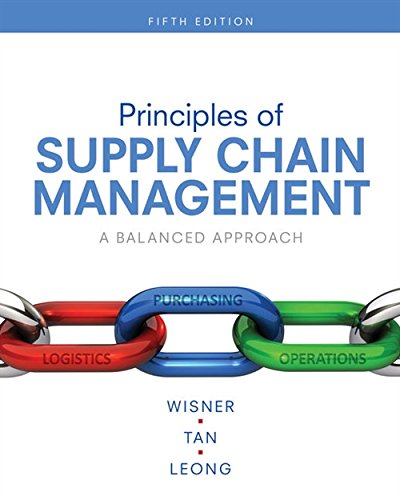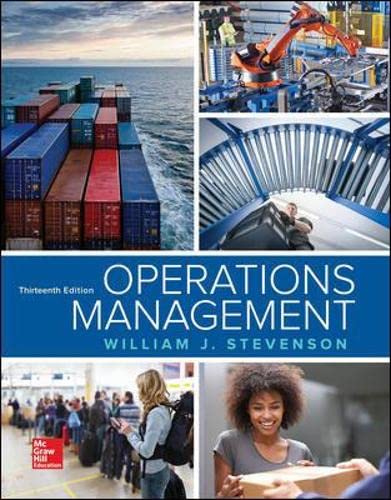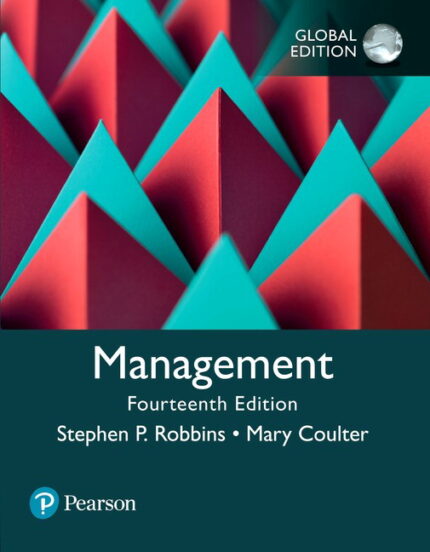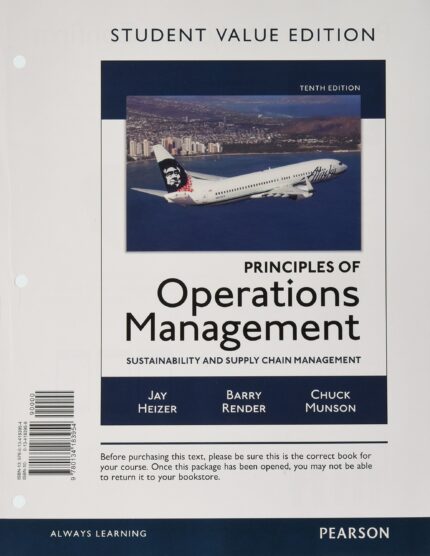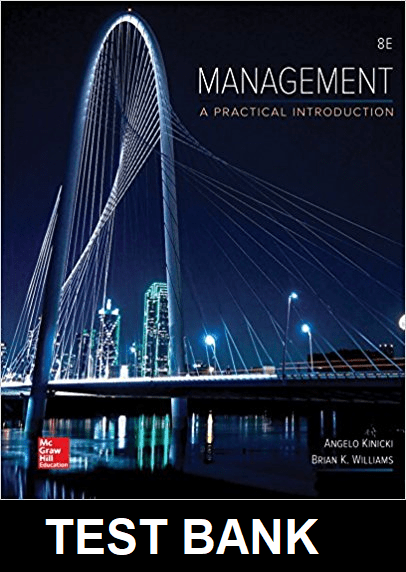Solution Manual for Principles of Supply Chain Management 5th Edition by Wisner
Solution Manual for Principles of Supply Chain Management 5th Edition by Wisner
Principles of Supply Chain Management 5th Edition by Wisner Solution Manual
Principles of Supply Chain Management 5th Edition
Principles of Supply Chain Management
Answers to Questions/Problems
Chapter One
Discussion Questions
- Define the term supply chain management in your own words, and list its most important activities.
Ans.: The Supply-Chain Council’s definition of supply chain management is“[m]anaging supply and demand, sourcing raw materials and parts, manufacturing and assembly, warehousing and inventory tracking, order entry and order management, distribution across all channels, and delivery to the customer.
These are also the most important activities, however integration of key supply chain processes might also be included in there.
- Can a small business like a local sandwich or bicycle shop benefit from practicing supply chain management?What would they most likely concentrate on?
Ans.: Yes, any organization can implement at least some of the important concepts. A good place to start is the rationalization or reduction of the supply base. Small businesses might also want to concentrate on customers as a starting point.
- Describe and draw a supply chain for a bicycle repair shop and list the important supply chain members.
Ans.: This will vary from student to student, but should include for instance parts suppliers, bicycle suppliers and other suppliers (ie, helmet suppliers) and services (ie, repair services) as 1st-tier suppliers and bicycle owners as 1st-tier customers.
- Can a bicycle repair shop have more than one supply chain? Explain.
Ans.: Yes. Every repair item the firm stocks has potentially a different supply chain associated with it.
- What roles do “collaboration” and “trust” play in the practice of supply chain management?
Ans.: This is essential for process integration. Sharing information and determining joint strategies is part of the integration/collaboration process, and to do this, trust must be present between the customer/focal firm/supplier.
- Why don’t firms just become more vertically integrated (eg. buy out suppliers and customers), instead of trying to manage their supply chains?
Ans.: This could cause a loss of focus and keep managers/employees from doing their core competencies, resulting in loss of performance.
- What types of organizations would benefit the most from practicing supply chain management? What sorts of improvements could be expected?
Ans.: Firms with many suppliers, many complex products, large inventories and many customers (in other words, firms with many supply chains). Gains would be lower purchasing costs, lower carrying costs, better product quality, and better customer service.
- What are the benefits of supply chain management?
Ans.: Reduction of the bullwhip effect, better buyer/supplier relationships, better quality, lower costs, better customer service, higher demand, more profits.
- Can nonprofit, educational, or government organizations benefit from supply chain management? How?
Ans.: Yes. All services and organizations can benefit in terms of at least better customer service, better inventory management, and cheaper purchase prices.

